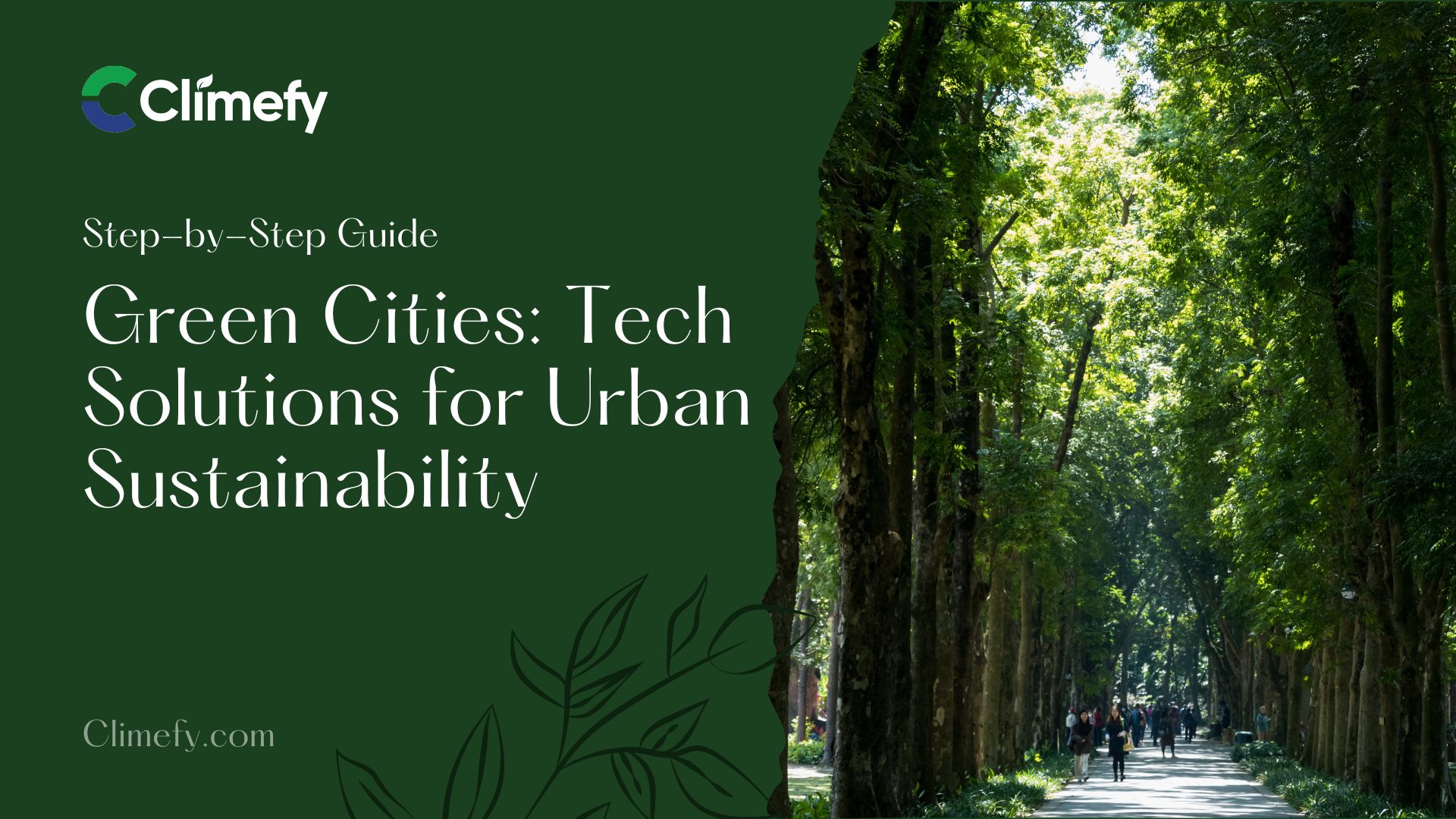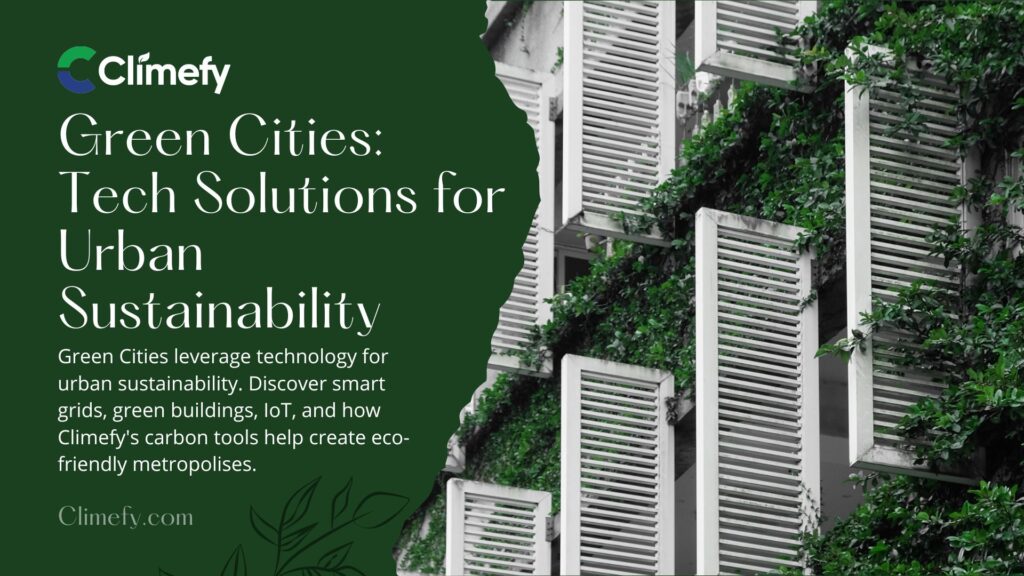

Green Cities are the cornerstone of a sustainable future, integrating advanced technology with environmental stewardship to create resilient, efficient, and livable urban spaces. This transformative approach reimagines metropolitan areas as symbiotic ecosystems where digital innovation, green infrastructure, and circular economic models converge to drastically reduce carbon footprints, enhance biodiversity, and improve the quality of life for all residents. The journey toward urban sustainability is not just a trend but a critical global imperative, powered by a suite of technological solutions that are reshaping our world.
In this comprehensive guide, you will learn:
Read More:

A Green City, also known as a sustainable city or eco-city, is an urban area designed with an emphasis on minimizing its environmental impact through profound resource efficiency, widespread adoption of renewable energy, expansive green infrastructure, and a commitment to social and economic equity.
It moves beyond the traditional model of resource-intensive urban development to embrace a holistic system where technology and ecology work in harmony. The goal is to create a city that meets the needs of the present without compromising the ability of future generations to meet their own, making it a critical response to the interconnected challenges of climate change, biodiversity loss, and rapid urbanization.
The urgency is underscored by data from the United Nations, which projects that nearly 70% of the world’s population will live in urban areas by the middle of the century, placing immense strain on resources and infrastructure.
Key pillars of a Green City include:
Urban sustainability is built upon a set of core principles that guide planning, development, and daily operations. These principles ensure that environmental health, economic vitality, and social equity are pursued simultaneously. They provide the philosophical and practical framework for transforming metropolitan areas into engines of positive ecological and human development.
The foundational principles are:
Smart energy management is the central nervous system of a green city, leveraging digital technology to optimize the generation, distribution, and consumption of electricity. The transition from centralized, fossil-fuel-based power systems to decentralized, intelligent, and renewable-based grids is fundamental to achieving urban carbon neutrality.
This shift not only reduces greenhouse gas emissions but also enhances grid reliability, reduces energy costs, and empowers consumers to become active participants in the energy market, a concept known as ‘prosumers’—those who both produce and consume energy.
Smart grids use digital communication technology to detect and react to local changes in usage, improving the efficiency, reliability, and economics of electricity delivery. When integrated with renewable energy sources like solar, wind, and geothermal, they form the backbone of a clean urban energy system. These grids manage the inherent intermittency of renewables by using real-time data to balance supply and demand, directing power where it’s needed most and storing excess energy for later use.
Key components and benefits include:
For corporations looking to directly contribute to this smart energy transition and manage their own carbon footprint, tools like the Climefy carbon calculator for large organizations provide the necessary data and insights to make strategic decisions. Understanding your company’s energy profile is the first step toward investing in renewable power and smarter energy use.
Transportation is a major contributor to urban air pollution and carbon emissions. Sustainable urban mobility aims to redefine how people and goods move through cities, prioritizing efficiency, accessibility, and zero emissions over private car ownership. The technological revolution in this sector is creating interconnected, multi-modal transport systems that are cleaner, smarter, and more user-friendly.
The electrification of transportation, coupled with robust and efficient public transit, is the most significant lever for decarbonizing urban mobility. Electric vehicles (EVs), including cars, buses, e-bikes, and e-scooters, produce zero tailpipe emissions, directly improving urban air quality. When charged with renewable energy, their overall carbon footprint becomes negligible. Enhancing public transit—such as electric trains, trams, and buses—reduces the number of private vehicles on the road, easing congestion and pollution.
The evolution of this sector includes:
Businesses, particularly small and medium-sized enterprises with delivery fleets, can assess their impact and plan their transition using specialized tools like the Climefy carbon calculator for small & medium companies. This allows them to measure emissions from logistics and transportation, a key part of their environmental footprint.
The Internet of Things (IoT) and Big Data analytics are the foundational technologies that enable the “smart” in smart green cities. By deploying a vast network of connected sensors throughout the urban fabric, cities can collect real-time data on everything from energy use and traffic patterns to air quality and waste bin fill levels. This data is then analyzed to gain insights, automate processes, and make informed decisions that enhance sustainability, efficiency, and public services.
IoT sensors act as the digital senses of the city, providing a constant stream of information that makes invisible systems visible and manageable. This granular, real-time monitoring allows for proactive and highly efficient management of critical resources, moving from scheduled maintenance to predictive, need-based interventions.
Specific applications transforming urban management include:
Buildings are responsible for a substantial portion of global energy consumption and carbon emissions, both from their operations (heating, cooling, lighting) and their construction (embodied carbon). Green buildings, also known as sustainable construction, address this by incorporating design principles and technologies that minimize environmental impact throughout the building’s entire life cycle—from site selection and construction to operation, maintenance, and even deconstruction.
A green building is characterized by its high efficiency and minimal environmental footprint. It is designed to use less energy and water, reduce waste, and provide a healthier indoor environment for occupants. Certifications like LEED (Leadership in Energy and Environmental Design) and BREEAM (Building Research Establishment Environmental Assessment Method) provide frameworks and standards for evaluating and recognizing these features.
The core features encompass:
The commitment to green construction is a powerful demonstration of a company’s dedication to sustainability. For businesses embarking on this path, Climefy’s ESG Consultancy can provide the strategic guidance needed to align real estate and construction projects with the highest environmental, social, and governance standards, enhancing corporate reputation and long-term value.
Urban green spaces—including parks, green roofs, vertical gardens, urban forests, and wetlands—are not merely aesthetic amenities; they are vital, multifunctional infrastructure that provides a host of ecological, social, and economic benefits. They are the “green lungs” of a city, essential for maintaining biodiversity, mitigating the urban heat island effect, managing stormwater, and promoting the mental and physical well-being of residents.
Integrating nature into the urban matrix creates a more resilient and livable city. Ecologically, these spaces support a variety of plant and animal species, creating corridors for wildlife movement. Socially, they provide invaluable spaces for recreation, community building, and respite from the dense urban environment.
The multifaceted benefits are proven and extensive:
Initiatives that create and preserve urban green spaces are prime candidates for carbon offset projects. Platforms like the Climefy Marketplace allow individuals and businesses to invest in verified afforestation and urban forestry projects, directly contributing to the creation of these vital green lungs while neutralizing their own carbon emissions.
The circular economy is a systemic alternative to the traditional linear economy. It is based on the principles of designing out waste and pollution, keeping products and materials in use, and regenerating natural systems. In an urban context, this means transforming waste management from a disposal-focused model to a resource-recovery model, where “waste” is redefined as a valuable input for new processes.
The goal of zero waste is a guiding principle for circular cities, aiming to eliminate the disposal of waste in landfills and incinerators. This is achieved through a combination of advanced technology, citizen engagement, and innovative business models that prioritize reduction, reuse, and recycling.
The strategic approach involves a multi-tiered system:
For corporations seeking to implement solid waste management strategies within their own operations and value chains, Climefy offers expert guidance. By analyzing waste streams and identifying circular opportunities, businesses can turn a cost center into a source of value and environmental leadership.
While the vision for green cities is clear, the path to achieving it is fraught with financial, technical, and social challenges. However, these challenges are being met with relentless innovation, leading to emerging trends that promise to accelerate the urban sustainability revolution. Understanding these hurdles and upcoming developments is crucial for planners, policymakers, and citizens alike.
The transition to a green city requires massive upfront capital investment. Retrofitting old infrastructure, building new smart systems, and deploying technology at scale are expensive endeavors. Furthermore, many cities operate with legacy systems that are difficult and costly to upgrade or replace.
Primary challenges include:
The future of green cities is being shaped by a convergence of cutting-edge technologies that promise to make urban systems more intelligent, adaptive, and integrated. These trends point towards cities that are not just sustainable, but actively regenerative.
Future-defining trends to watch:
For any organization, understanding and preparing for this future requires knowledge. The Climefy Sustainability Academy offers courses and training to equip professionals with the skills needed to lead in this evolving landscape of urban sustainability and climate action.
While the terms are often used together, they have distinct focuses. A smart city prioritizes the use of technology and data to improve the efficiency and quality of urban services, which can include areas like public safety and digital governance that aren’t directly environmental. A green city focuses specifically on ecological goals like reducing carbon emissions, enhancing biodiversity, and sustainable resource management. The ideal is a smart green city, where technology is deliberately deployed to achieve environmental sustainability.
Individual actions collectively have a massive impact. You can:
Use the Climefy carbon calculator for individuals to understand and track their personal carbon footprint.
Choose sustainable transportation: walk, cycle, use public transit, or drive an EV.
Reduce, reuse, and recycle diligently.
Conserve energy and water at home.
Support local businesses and farmers’ markets to reduce food miles.
Advocate for green policies by engaging with local representatives and community groups.
A net-zero city is one that balances the amount of greenhouse gases it emits with the amount it removes from the atmosphere. Achieving it requires a two-pronged approach: first, drastically reducing emissions from energy, transport, and industry through efficiency and renewables; and second, enhancing natural carbon sinks (like urban forests) and employing technological solutions to remove carbon. Companies like Climefy support this journey by providing the carbon accounting and offsetting frameworks necessary for both cities and businesses to achieve their net-zero ambitions.
Initially, the upfront investment can be higher. However, green cities are designed for long-term economic savings. Energy-efficient buildings have lower utility bills, robust public transit reduces personal transport costs, and preventative health measures (enabled by clean air and active lifestyles) lower healthcare expenditures. Over time, the operational savings and improved quality of life make green cities more economically resilient and affordable.
Sustainable urban planning makes cities more resilient to climate-related impacts, such as flooding, heatwaves, and storms. This involves:
Creating green spaces and water bodies to absorb excess stormwater and reduce heat.
Restoring coastal wetlands as buffers against sea-level rise and storm surges.
Enforcing building codes that require structures to withstand extreme weather.
Developing emergency response plans and early warning systems for climate-related disasters.